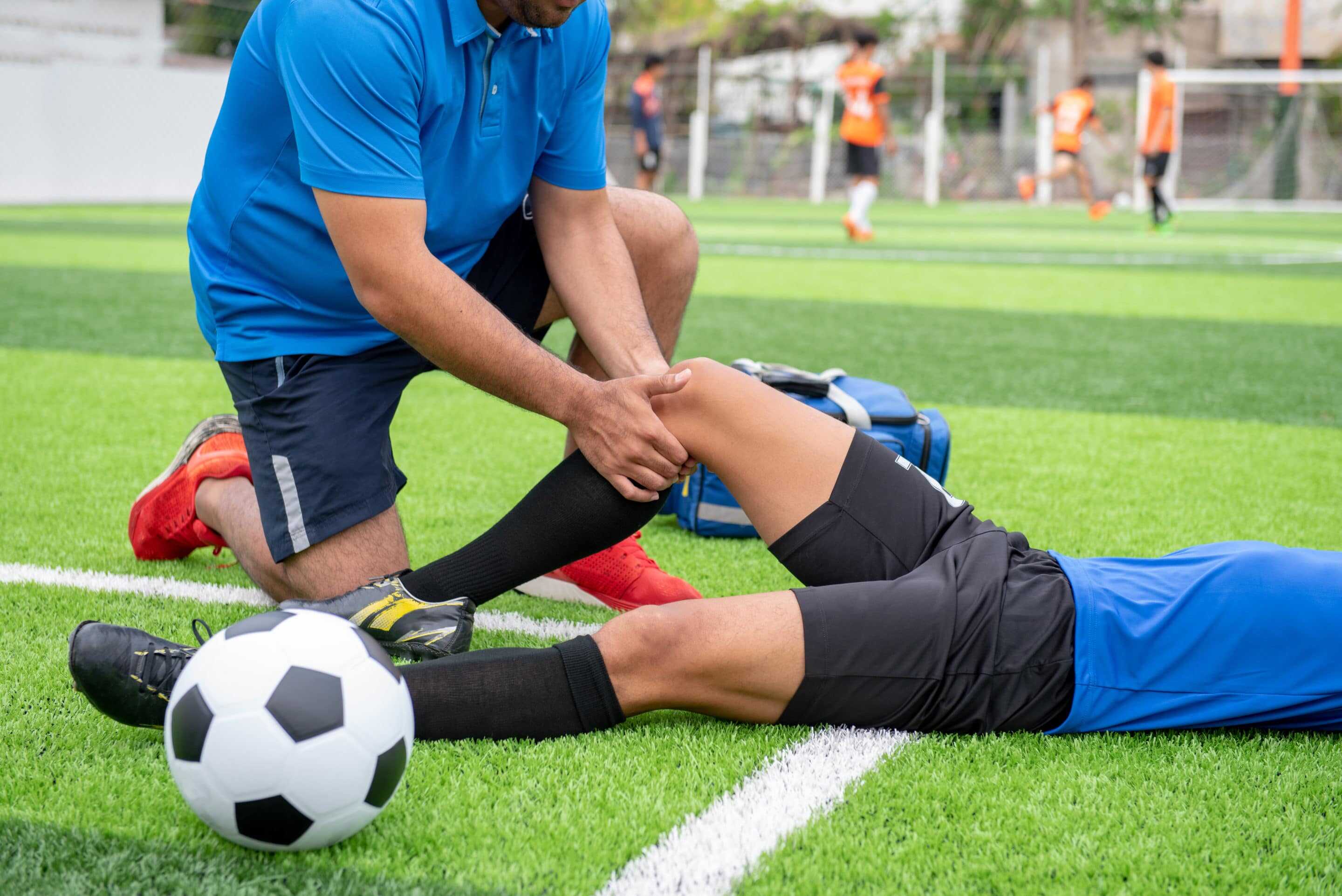Getting Back into Sports After a Foot or Ankle Injury
Injuries are, almost inevitably, a part of the sports experience for dedicated athletes.
No matter how well you condition yourself, no matter how well you prepare, when you continually push your body to its limit, the risk of injury will always be there.
And a foot or ankle injury can be a devastating moment for any athlete. That’s just as true for a middle school midfielder who must miss the last few games of her season as it is for professional athletes with international glory and multi-million-dollar contract offers at stake.
We should know, because we’ve treated patients in both categories—and everything in between.
Naturally, if you do get hurt, returning to play as quickly as possible becomes your primary goal. But for many athletes, that’s a fine line to walk. Returning too quickly, before you’re ready, not only reduces your athletic performance but also greatly increases the risk you’ll hurt yourself again—only worse this time.
So, what’s the right way to get back into sports after a foot or ankle injury? Here are a few important tips.

Don’t Delay Getting Your Injury Treated in the First Place
Of course, if your injury is a traumatic one—say a broken bone or a bad sprain—you’re probably going to be heading to the doctor pretty much immediately for an exam. You don’t really have any other choice.
Those with overuse injuries, though—heel pain, stress fractures, tendinitis, etc.—might make the mistake of trying to “play through the pain.” Frankly, that’s a bad idea.
If you keep abusing your feet and don’t give them what they need to heal, your injury will only get worse. In the worst-case scenario, fatigued and strained tissue could fully rupture, requiring much more extensive treatment (usually surgery) to fix.
On the other hand, if you’re proactive and get painful symptoms checked out as soon as you notice them, you will spare yourself a lot of pain, and miss fewer games in the end.
And, bonus: at Colorado Center for Podiatric Sports Medicine, we provide many athlete-focused advanced treatment technologies that can significantly shorten your recovery timetable by accelerating healing and allowing you to return to training sooner. This includes options such as MLS laser therapy, shockwave therapy, and prolotherapy.
Stay Positive
It seems wild, but study after study shows that your mental attitude can make a difference in terms of how quickly your body heals.
And in our practice, we’ve seen it over and over again. The way our athletes approach their recovery process from a mental and psychological perspective is strongly correlated with the overall duration of the recovery. A positive person is better able to keep perspective and stay focused on recovery.
That said, it’s very normal to be sad, angry, frustrated, or all the above after an injury. It’s okay to give yourself a little time to grieve your setback. But within a few days, you’re going to want to start focusing on the things you need to do to get better.
Here are some additional tips that may help:
- Accept what happened to you and take responsibility for your rehab. Don’t look back—look forward.
- Monitor your “self-talk.” If you find yourself saying and thinking negative things, it may help to stop, take a deep breath, and say something positive about yourself.
- Seek out support and encouragement from family, teammates, friends, coaches, etc.
- Set achievable, manageable daily or weekly goals, so you don’t get overwhelmed.
- Find other ways to channel your competitive energy. It seems silly, but taking up video games, or crossword puzzles, or really anything that can hold your attention and challenge your skills can really help you from getting stuck in a funk.
Stick to Your Rehab Plan
We know … it’s hard to stick with your doctor’s rehab plan, especially after a serious injury.
If things aren’t going well, rehab can start to feel monotonous. The exercises might be boring, tiring, even uncomfortable or painful. And if you aren’t making progress too quickly, it’s easy to get discouraged.
On the flipside, if rehab seems to be going really well, you may be tempted to either do more exercises than your body is ready for (not good) or skip phases of your rehab entirely because you think you must be up for the next challenge. This can re-trigger the original injury and cause crushing setbacks.
We know it’s tough, but it’s really important that you trust your doctor and follow your rehab plan carefully. We set these programs because we truly want what’s best for you, and we have dealt with these sorts of injuries over and over again.
We also work hard to make sure our rehab programs are as varied and engaging as possible, with a return to appropriate sport-specific activities as quickly as possible.

Restart Slowly
If you’ve been away from the game for a little while, it’s only natural that some of your skills and coordination will deteriorate a bit. Even if your injury is fully healed, it will take time to get yourself back into “game shape.”
So, take it easy at first. This is especially true when, as part of your rehab program, you’ve been given new orthotics or shoes to wear, or new techniques to implement into your training to reduce the risk of subsequent injury. As you return to training and play successfully, you can continue to ramp up the intensity of your exercise a little each week.
Are you struggling with a nagging foot or ankle injury, or a rehab plan that just isn’t providing results? Give the Colorado Center for Podiatric Sports Medicine a call today at (720) 600-3380 and schedule an appointment with us at our office in Longmont!
—
Visit Us
1551 Professional Lane, Ste. 105
Longmont, CO 80501
Contact us
(720) 600-3380 Tel
(720) 306-5430 Fax
Hours
By Appointment Only
© Colorado Center for Podiatric Sports Medicine | Privacy Policy

